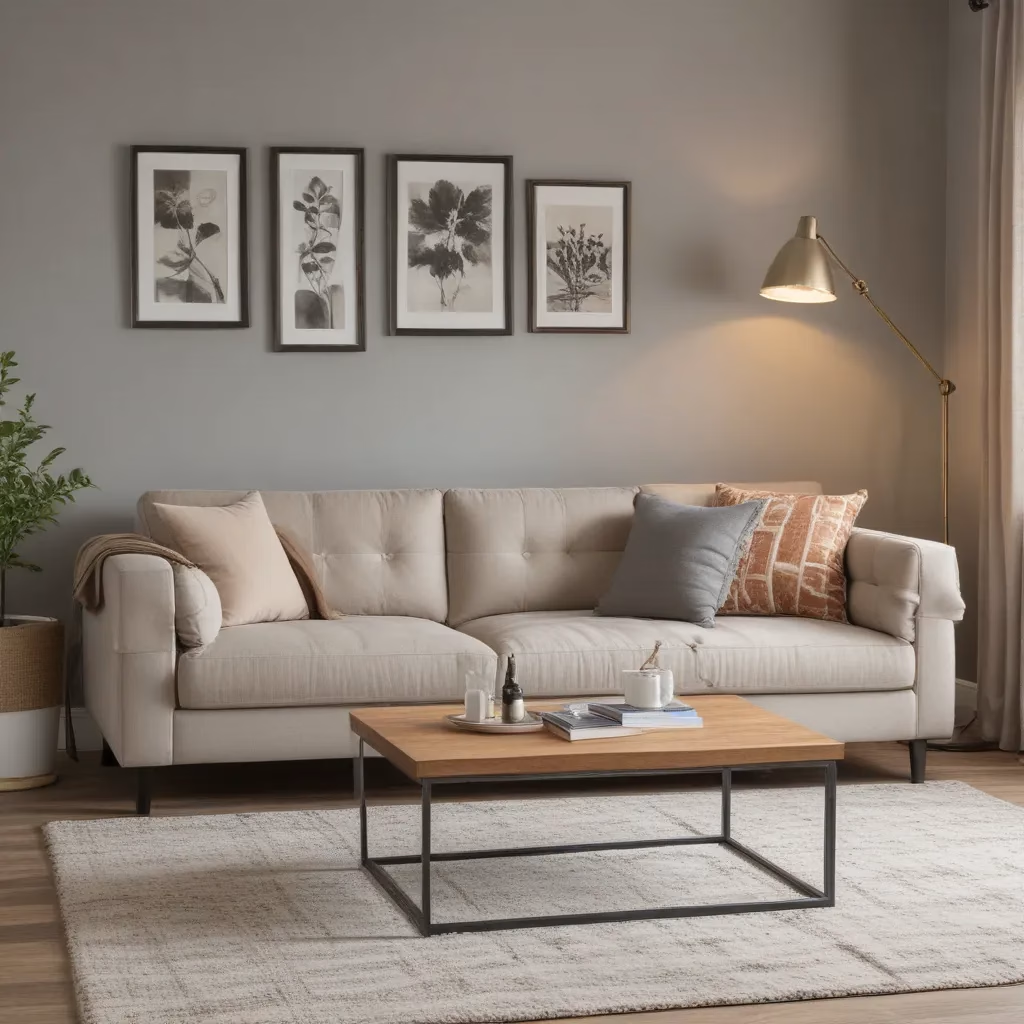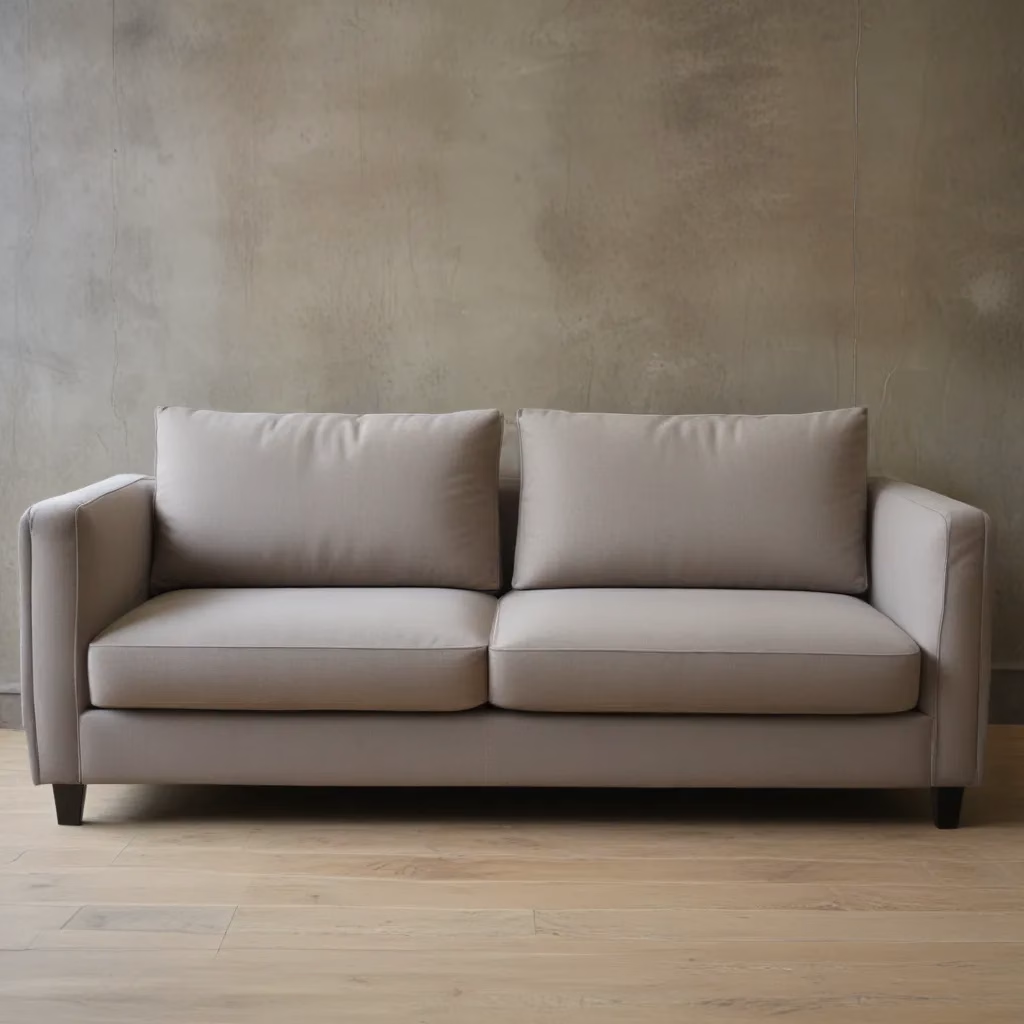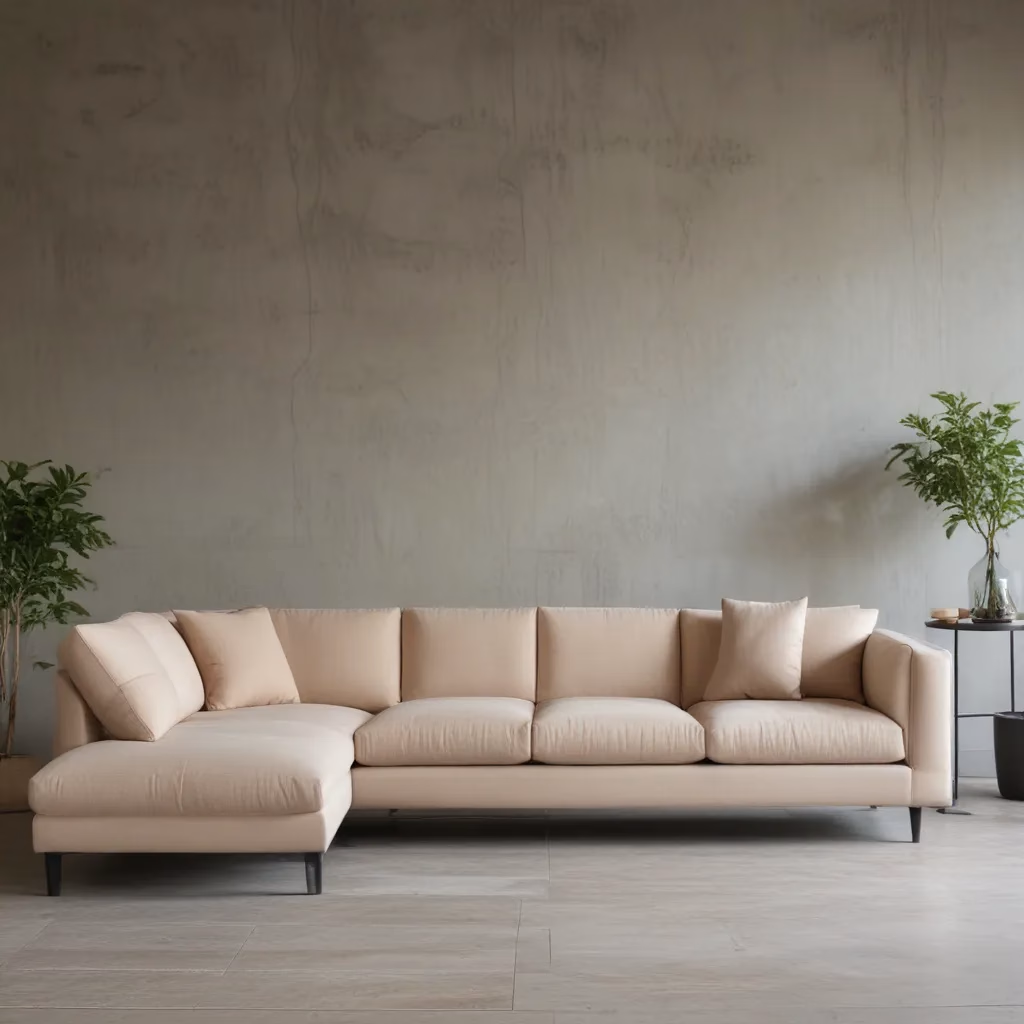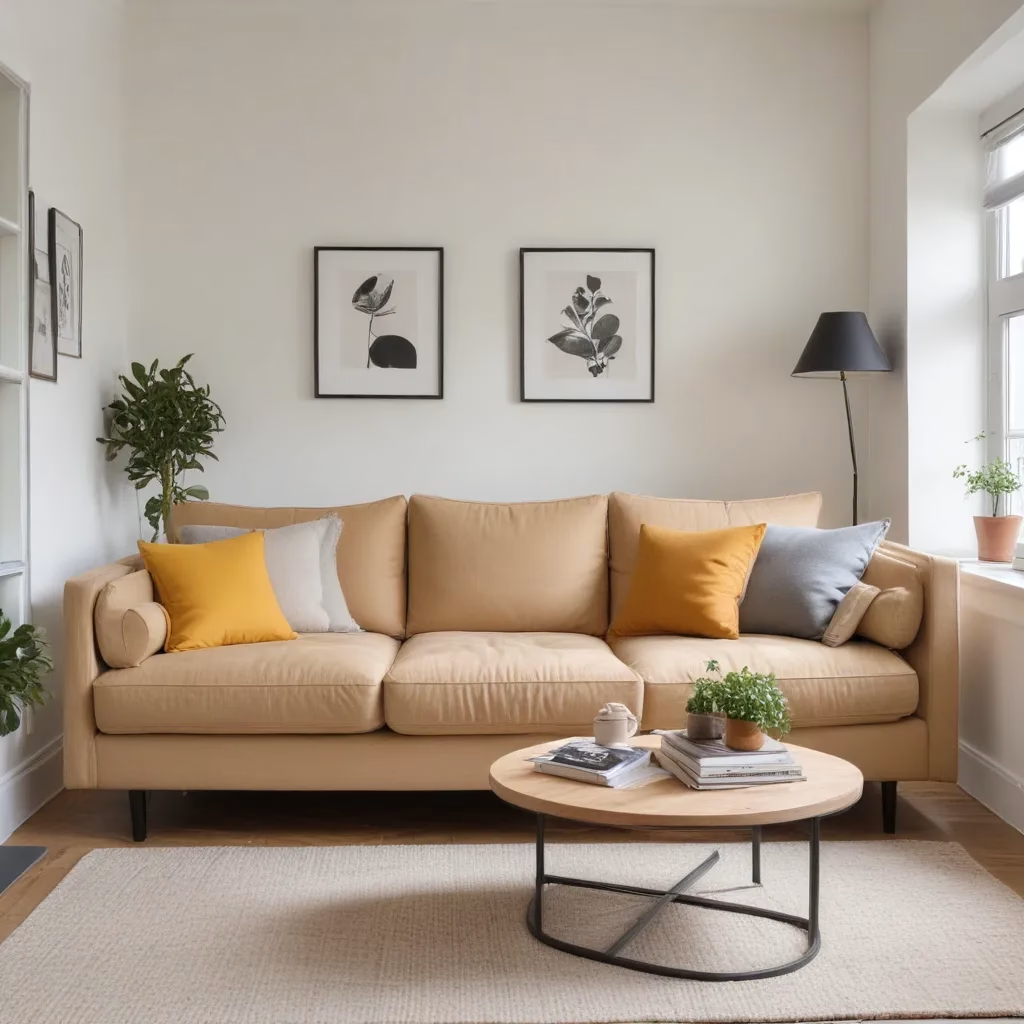
As an experienced furniture consultant and interior design writer, I’ve had the pleasure of helping countless clients transform their living spaces into stylish, comfortable retreats. One of the most common challenges I encounter is finding the perfect sofa placement, especially in rooms with tricky layouts. Whether it’s navigating around windows, doors, or architectural features, there are always creative solutions to make the most of your square footage - you just need to know where to look.
Now, this might seem counterintuitive…
Evaluating Room Dimensions
The first step in any successful sofa placement strategy is to thoroughly assess the dimensions of your living space. Measure the room’s length, width, and ceiling height, taking note of any obstacles or obstructions that may impact furniture arrangement. Be sure to account for traffic flow, door swing clearance, and sightlines to create a balanced, functional layout.
Once you have a solid grasp of the room’s physical parameters, start exploring ways to maximize seating without feeling cramped or overcrowded. Angled furniture can be a game-changer in small or awkwardly shaped rooms, as it helps to define different zones while maintaining an open, airy feel. Don’t be afraid to pull sofas and chairs slightly forward from walls to create more visual interest and breathing room.
Identifying Focal Points
With the room’s dimensions in mind, the next step is to identify the primary focal point. This could be a fireplace, a striking piece of artwork, or even a stunning architectural feature like a bay window. Arranging your sofa and other seating to face this focal point will instantly elevate the visual appeal of the space and encourage natural conversation.
If your room lacks a clear focal point, consider creating one by strategically positioning your sofa. Place it perpendicular to a window or at an angle to draw the eye inward. This simple trick can transform an otherwise generic arrangement into a visually captivating one.
Balancing Furniture Arrangement
Once you’ve determined the room’s focal point, it’s time to start balancing the furniture arrangement. Symmetry can be a powerful tool in creating a harmonious, well-designed living space. Consider flanking your sofa with a pair of matching armchairs or placing complementary side tables on either end.
If your room has an off-center window or architectural feature, don’t be afraid to lean into the asymmetry. Hang artwork or install shelving to visually balance the space, ensuring that the room feels intentional rather than haphazard.
Upholstery Considerations
Now that you’ve nailed down the layout, it’s time to turn your attention to the all-important sofa itself. When it comes to upholstery, there are a few key factors to consider:
Fabric Durability and Maintenance
Depending on your lifestyle and the amount of foot traffic in your living room, you’ll want to choose a fabric that can withstand regular use. Stain-resistant, easy-to-clean options like microfiber or performance fabrics are excellent choices for families with young children or pets.
Colour and Pattern Selection
The colour and pattern of your sofa’s upholstery can significantly impact the overall aesthetic of your living room. Opt for neutral, solid-coloured fabrics if you plan to frequently change up your décor, or make a bold statement with a vibrant, patterned sofa that will serve as the room’s central focus.
Texture and Comfort
Don’t forget to consider the tactile aspect of your sofa’s upholstery. Plush, high-quality fabrics like velvet or chenille can elevate the comfort factor, while textural elements like tufting or fringe can add visual interest.
Living Room Layout Principles
Arranging your living room furniture is part science, part art. Start by considering the flow of foot traffic and ensuring that pathways remain clear and unobstructed. Grouping your seating into conversation areas encourages interaction and creates a cosy, inviting atmosphere.
When it comes to incorporating architectural features like windows and doors, think creatively. Angle furniture to maximise the space, or use smaller-scale pieces like accent chairs to fill tricky nooks and crannies. Don’t be afraid to experiment – sometimes the most unexpected arrangements can result in the most visually striking outcomes.
Sofa Cleaning and Care
Maintaining the longevity and appearance of your sofa is key to preserving your investment. Regularly vacuum the upholstery to remove dirt and debris, and spot-clean any spills or stains promptly. For deeper cleaning, consider hiring a professional upholstery cleaning service every 12-18 months.
When it comes to stain removal, always test cleaning solutions in an inconspicuous area first. Blot (don’t rub) the affected region, and avoid using harsh chemicals that could damage the fabric. With a bit of TLC, your sofa can remain looking its best for years to come.
Styling for Comfort and Aesthetics
Once your sofa is in place, it’s time to layer on the styling touches that will transform your living room into a cosy, inviting haven. Start by incorporating plush, textured throw pillows and cozy blankets to amp up the comfort factor. Strategically placed table lamps and floor lamps can also enhance the ambiance, creating a warm, welcoming glow.
Don’t be afraid to personalize the space with artwork, plants, and other accessories that reflect your unique style. By blending form and function, you can create a living room that is both visually stunning and incredibly comfortable.
Buying Guide for Sofas
When it comes time to invest in a new sofa, the options can feel overwhelming. Start by taking careful measurements of your living room, ensuring that you choose a piece that will fit seamlessly into the space. Pay close attention to the depth, width, and height of the sofa, as well as the arm and back styles.
Evaluating the sofa’s construction is also crucial. Look for high-quality materials like kiln-dried hardwood frames and premium foam or down-filled cushions that will stand the test of time. Research reputable brands with a proven track record of durability and customer satisfaction.
Flexible Seating Solutions
In small or awkwardly shaped living rooms, versatility is key. Modular and sectional sofas offer a flexible, customizable solution, allowing you to configure the pieces in a way that best suits your space. Convertible sleeper sofas are another excellent option, providing extra sleeping accommodations for overnight guests without sacrificing your everyday living space.
For truly compact rooms, consider space-saving furniture like loveseat-sized sofas or armchairs. These smaller-scale pieces can pack a serious style punch while freeing up valuable floor space.
Enhancing Small Living Rooms
If your living room is on the cozy side, don’t despair! There are plenty of optical illusion techniques and design strategies to make the most of your square footage. Opt for light, airy fabrics and choose furniture with exposed legs to create an impression of openness. Mirrors strategically placed across from windows can also help to expand the visual field.
Maximising storage potential is another crucial aspect of small-space living. Look for multi-functional furniture like ottomans with hidden storage compartments or sofa beds that serve double duty. Invest in compact, streamlined pieces that don’t overwhelm the room, and consider built-in cabinetry or shelving to keep clutter at bay.
No matter the size or shape of your living room, with a bit of creativity and strategic planning, you can transform even the most challenging space into a comfortable, stylish retreat. So, what are you waiting for? Let’s dive in and start troubleshooting your sofa placement!
Tip: Rotate cushions regularly to maintain even wear



